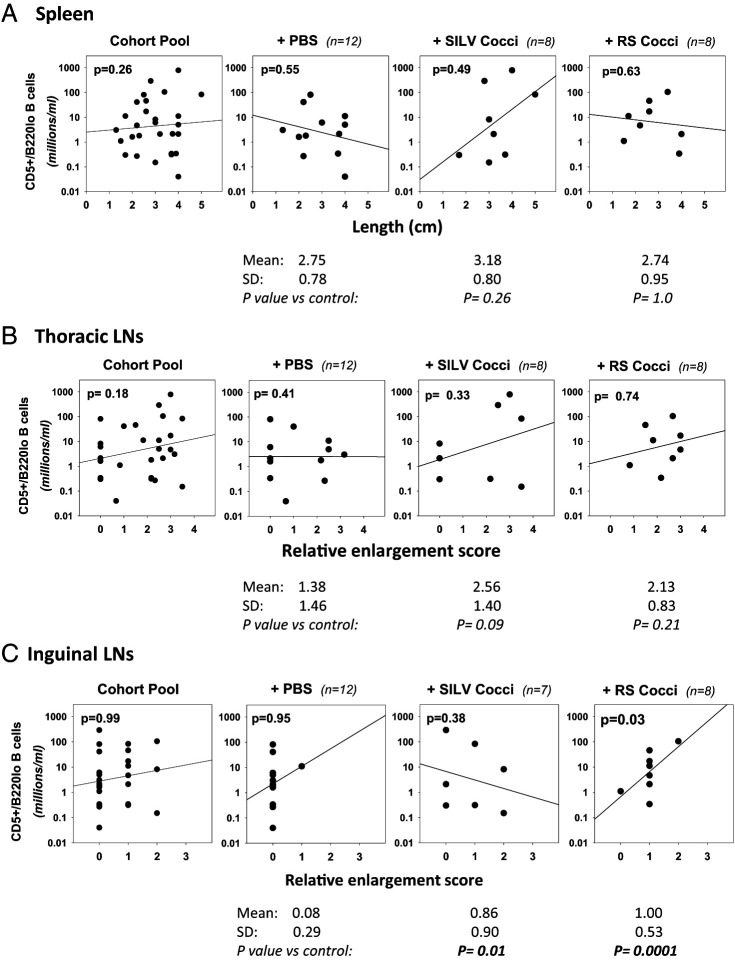FIGURE 9.
Relationship between CD5+/B220low B cell frequency and lymphoid tissue enlargement.
Linear regression analyses were employed for assessing whether the abundance of CD5+/B220low B cells within the last blood sample obtained was statistically linked to enlargement of lymphatic tissues seen at necropsy. Spleen size was determined by assessing length (centimeters). Thoracic and inguinal LN enlargement was assessed subjectively and scored, as described in Materials and Methods. (A) Spleen. Shown are dot plots and linear regression lines comparing CD5+/B220low B cell number and spleen size (centimeter length) (left to right) within the cohort pool, and control, SILV-treated, or RS-treated individual cohorts. No statistically significant relationship between these parameters was noted in any cohort. Values below each cohort plot represent spleen size in centimeters (mean ± SD) as well as p values from a statistical comparison of spleen size within the control cohort and each Coccidioides-treated cohort, employing either a parametric t test or nonparametric Mann–Whitney rank-sum test. No significant difference from control mice was noted. (B) Thoracic LNs. A similar analysis with thoracic LNs revealed no statistically significant relationship between CD5+/B220low B cell numbers and relative thoracic LN enlargement in any cohort. However, when thoracic LN size within the control cohort was compared with that of the Coccidioides-treated cohorts, the greater size within SILV-treated mice (enlargement score of 2.56 versus 1.38 in control mice) approached statistical significance (p = 0.09). (C) Inguinal LNs. By linear regression analysis, a statistically significant relationship was noted between CD5+/B220low B cell numbers and relative inguinal LN enlargement in RS-treated mice (p = 0.03), but not other cohorts. Values below each plot reveal that inguinal LN enlargement scores within both the SILV-treated and the RS-treated cohorts were statistically greater than those in the control cohort (p = 0.01 and p = 0.0001, respectively). Of note, necropsy was not performed in 2 of 14 total PBS-treated mice (E12-F1 and E12-F2) and in 1 of 8 total SILV-treated mice (E6-F1) due to body deterioration after unanticipated death.

